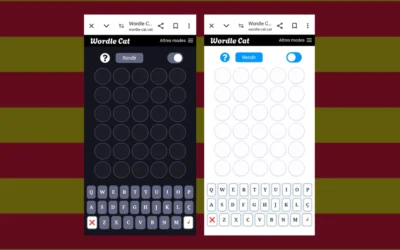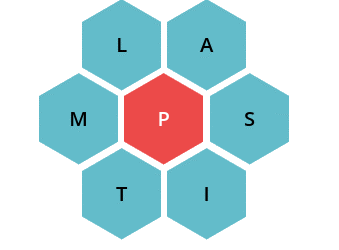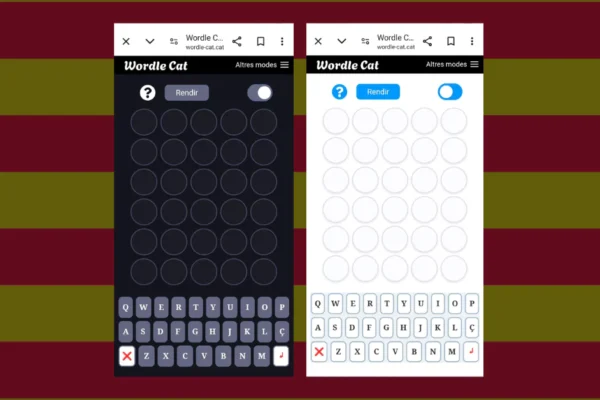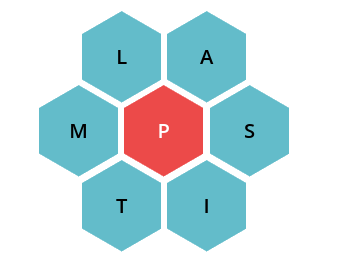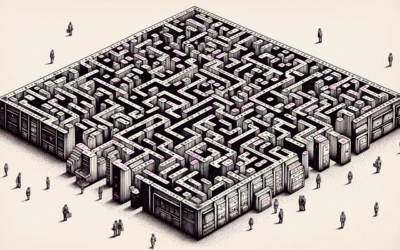

NYT Connections Odyssey – Navigating the Maze of Letters and Addiction
Introduction to Nyt Connections
Picture this: You open the NYT Connections puzzle, confident, coffee in hand. Four seemingly unrelated words stare back at you. Your mind races—categories? Themes? Are “Apple,” “Orange,” “Banana,” and “Grapes” about colors? Foods? Fruits? You lock in “fruits.” Boom! A rush of victory. But then, the real challenge begins.
Welcome to the addictive labyrinth that is NYT Connections—a game that teases your brain, toys with your logic, and sometimes leaves you spiraling in frustration. As a game developer, I appreciate the intricate balance of difficulty, reward, and frustration that makes this game so compelling. If Wordle is a casual morning jog, Connections is an obstacle course, complete with mental hurdles and the occasional faceplant. But that’s exactly what makes it so irresistible.
The Basics: How Connections Works
For the uninitiated, NYT Connections is a word association puzzle where you must sort 16 words into four groups of four based on a common theme. Some themes are obvious—colors, movie titles, musical instruments. Others? Not so much. (Looking at you, “words that start with silent letters.”)
From a game design perspective, this setup is brilliant. The simplicity of dragging and dropping words disguises the real challenge—identifying patterns that aren’t always obvious. As a developer, I admire how the game subtly teaches players to think in broader, more lateral ways. It forces you to question your assumptions and redefine how words connect, making each round a small exercise in cognitive flexibility.
The Connections NYT starts with four tries. Each incorrect guess costs you one. The groups are color-coded by difficulty: yellow (easy), green (moderate), blue (tricky), and purple (mind-melting). And trust me, when you hit purple, the game turns into an existential crisis: “Do I even know words? Do words know me?”
Once you’ve cracked all four groups, you’re either celebrating your linguistic genius or regretting every choice that led you to this moment.
Why is NYT Connections So Addictive?
Good question. Let’s break it down from a game developer’s perspective:
- Pattern Recognition at Its Best (or Worst)
Our brains crave patterns. Connections feeds that craving like a well-placed dopamine dispenser. When you spot a category, it feels like unlocking a secret code—like you’ve outwitted the puzzle gods. But when you don’t? Cue mental chaos. This taps into one of the core principles of game design: the balance between challenge and reward. The game gives just enough wins to keep you engaged while ensuring that frustration is never far away. - The “One More Game” Effect
Much like its NYT cousin, Wordle, Connections lures you into a cycle. Each game is just difficult enough to challenge you but short enough that you think, “I’ll just do one more tomorrow.” Spoiler: Tomorrow never ends. This psychological loop is a key factor in successful puzzle games—the feeling of near-mastery keeps players coming back. - The Collective Struggle
Ever texted a friend, “What in the world do ‘Cane,’ ‘Barrel,’ ‘Snare,’ and ‘Tom’ have in common?” Welcome to the group therapy session that is Connections. (For the record, they’re types of drums—who knew?) Games that create social engagement tend to have longer lifespans, and NYT Connections capitalizes on that perfectly. - The Ultimate Ego Boost (or Humbling Experience)
Some days, you breeze through in record time, feeling like a linguistic mastermind. Other days, you find yourself Googling “words that relate to ducks” and questioning all life choices. Either way, the emotional rollercoaster is what keeps you hooked. This emotional variance is a classic game design tactic—by keeping victory inconsistent, players stay invested in chasing success.
The Art of Strategy: How to Win More Often
Now, let’s talk tactics. If you want to improve (or just avoid throwing your phone across the room), consider these tips:
1. Scan for the Obvious First
Always start with the easy wins. If there’s an unmistakable group—like dog breeds or planets—lock it in. This narrows the playing field for the trickier ones.
2. Watch for Wordplay
NYT loves sneaky themes: homophones, idioms, slang. Just because words don’t seem related on the surface doesn’t mean there isn’t a hidden thread tying them together. As a developer, I respect how the game subtly teaches players to expand their thinking beyond traditional definitions.
3. Look for Multiple Categories
Some words fit multiple groups. “Spring” could relate to seasons, metal coils, or even sources of water. Be flexible and think outside the box.
4. Pay Attention to Adjectives vs. Nouns
If you see “Blue” mixed in with “Green,” “Yellow,” and “Red,” don’t assume it’s just colors—maybe they’re Crayola crayon names, or flags, or even movie titles.
5. Accept Defeat Gracefully (or Not)
Sometimes, no amount of brainpower will save you from NYT’s trickery. When you lose, take solace in the fact that tomorrow brings a fresh start—and another chance to prove your linguistic worth.
The Future of NYT Connections: Will the Obsession Last?
NYT has a knack for crafting viral word games. Wordle still thrives, Spelling Bee has its loyal following, and now Connections is the new daily addiction. But will it stand the test of time?
As a game developer, I believe it has a strong chance. Its blend of logic, creativity, and sheer frustration suggests that yes, it’s here to stay. Unlike Wordle, which tests vocabulary, Connections challenges lateral thinking—a skill that keeps it fresh. Plus, let’s be real: as long as there are words, there will be clever ways to group them.
The game also taps into a broader cultural phenomenon—the joy of solving, of deciphering meaning in chaos. Whether you’re playing solo, teaming up with friends, or yelling at your screen in frustration, NYT Connections delivers an experience that feels personal yet universal.
Final Thoughts: Should You Try It?
If you haven’t yet joined the NYT Connections craze, now is the time. Just be warned: once you start, there’s no turning back. You’ll find yourself analyzing grocery lists for hidden patterns and questioning the true meaning of words like “bow.”
As a game developer, I can confidently say that NYT Connections is a well-crafted, engaging, and brilliantly frustrating puzzle experience. It’s a masterclass in game design—simple in concept but complex in execution. So, grab your coffee, open the puzzle, and prepare for the delightful agony of Connections. Just don’t blame me when you’re texting your friends at midnight, screaming about a category you should have gotten right. Happy puzzling!
